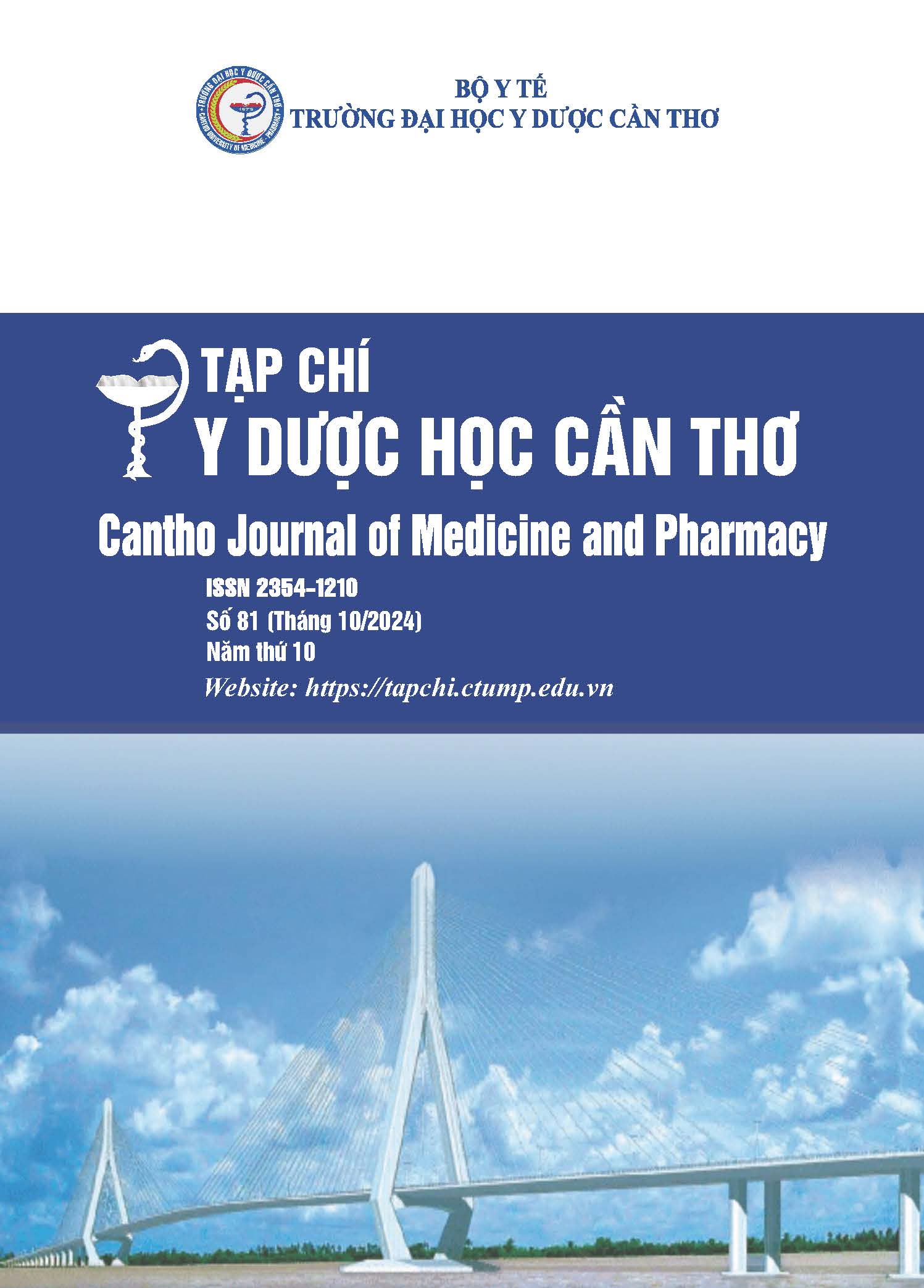CLINICAL CHARACTERISTICS OF CEREBRAL STROKE PATIENTS AT THE TRADITIONAL MEDICINE HOSPITAL OF DAK LAK PROVINCE
Main Article Content
Abstract
Background: Stroke frequently affects the elderly and is the world's second biggest cause of mortality after cardiovascular disease. The disease often leaves behind disabilities and is a burden for families and society. Objectives: To describe some characteristics of stroke patients, including sociodemographic characteristics, clinical features, and lifestyle factors. Materials and methods: A cross-sectional study was conducted on 97 stroke patients at the Rehabilitation Department, Dak Lak Traditional Medicine Hospital from August 2022 to September 2023. Results: The average age was 62.92 ± 10.83 years, with males accounting for the majority (62.9%). Most patients lived in rural areas (76.3%), and the most common occupation was farming (47.4%), with primary education level being the highest (47.4%). The majority of patients were married (78.4%), living with family (54.6%), and cared for by their children (46.4%). First-time stroke patients accounted for 78.4%, while recurrent stroke patients accounted for 21.6%. The left side was the most common site of limb weakness (67%). Conclusions: This study provides important data on the clinical characteristics of stroke patients, aiding in the development of effective treatment and care strategies to improve the quality of life for patients.
Article Details
Keywords
cerebral stroke, clinical characteristics, rehabilitation
References
2. Revicki, D.A., et al. Recommendations on health-related quality of life research to support labeling and promotional claims in the United States. Qual Life Res. 2000. 9(8), 887-900. DOI: 10.1023/a:1008996223999.
3. Bộ Y tế. Nâng cao nhận thức của cộng đồng về phòng, chống đột quỵ tại Việt Nam.
https://dotquy.kcb.vn/tin-tuc/nang-cao-nhan-thuc-cua-cong-dong-ve-phong-chong-dot-quy-tai.html.
4. Nguyễn Tấn Dũng. Nghiên cứu chất lượng cuộc sống và hiệu quả phục hồi chức năng nâng cao chất lượng cuộc sống của người bệnh sau tai biến mạch máu não tại Đà Nẵng. Trường Đại Học Y Hà Nội, 2012.
5. Đặng Thị Hân. Đánh giá chất lượng cuộc sống của người bệnh đột quỵ não điều trị tại bệnh viện Y học cổ truyền tỉnh Nam Định năm 2017. Tạp chí Khoa học Điều dưỡng, 2018. 1(2): p. 50-57.
6. Hà Xuân Kiên. Chất lượng cuộc sống của người bệnh sau đột quỵ não điều trị tại Bệnh viện Đa khoa tỉnh Hà Giang năm 2021. Tạp chí Khoa học Điều dưỡng. 2021. 4(3), 83-94.
7. Garratt, A.M., et al., Use of EQ-5D-5L for Assessing Patient-Reported Outcomes in a National Register for Specialized Rehabilitation. Arch Phys Med Rehabil. 2024. 105(1), 40-48, DOI: 10.1016/j.apmr.2023.04.026.
8. Đinh Hữu Hùng. Nguy cơ tái phát sau đột quỵ thiếu máu não cục bộ cấp theo phân tầng một số yếu tố liên quan. Trường Đại học Y Dược TP. Hồ Chí Minh. 2014.
9. Nguyễn Hải Linh, Phân tích một số yếu tố nguy cơ trên bệnh nhân đột quỵ não dưới 45 tuổi. Tạp chí Y học Việt Nam. 2023. 530 (1).


